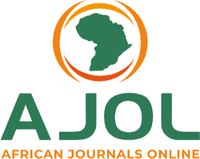GEO-ACCUMULATION AND CONTAMINATION STATUS OF HEAVY METALS IN SELECTED MSW DUMPSITES SOIL IN GOMBE, NIGERIA
DOI:
https://doi.org/10.56892/bima.v2i02.89Keywords:
Contamination factor, control, heavy metal, solid waste, selected dumpsite, surface soilAbstract
The study assessed the extent of heavy metals contamination, determined geo-accumulation
index and degree of contamination in Municipal Solid Waste (MSW) dumpsites soil in Gombe,
Nigeria. Surface soil samples were collected at depth 5 - 15 cm from four selected dumpsites
soil, a virgin soil away from dumps served control and were all analyzed for heavy metals (Fe,
Cd, Cr, Cu, Mn, Ni, Pb and Zn) using Atomic Absorption Spectroscopy (AAS). The mean
concentrations of the heavy metals (mg/kg) ranged from (105.68 - 301.16) Fe, (0.02 - 2.20) Cd,
(0.65 - 2.16) Cr, (4.09 - 24.05) Cu, (40.87 - 100.08) Mn, (1.09 - 5.01) Ni, (2.01 - 9.05) Pb and
(50.05 - 101.0) Zn for dumpsites soil and (105.68 ) Fe, (0.02) Cd, (0.65) Cr, (4.09) Cu, (40.87)
Mn, (1.09) Ni, (2.01) Pb and (50.05) Zn for control soil sample. The concentrations of all the
studied metals were within Department of Petroleum Resources (DPR) set limit, except Cd was
above (0.8 mg/kg) limit set by World Health Organization (WHO) and DPR. The calculated geoaccumulation
index (Igeo) shows that the soil samples from A, B, C and D dumpsites were
moderately polluted with cadmium but not with other studied metals. The contamination factor
(Cf) categorized the investigated soil samples as low contaminated with cadmium and the
recorded degree of contamination (Cd) indicated the low degree of contamination in the soil
samples which it falls under (Cd < 8) low degree of contamination.





